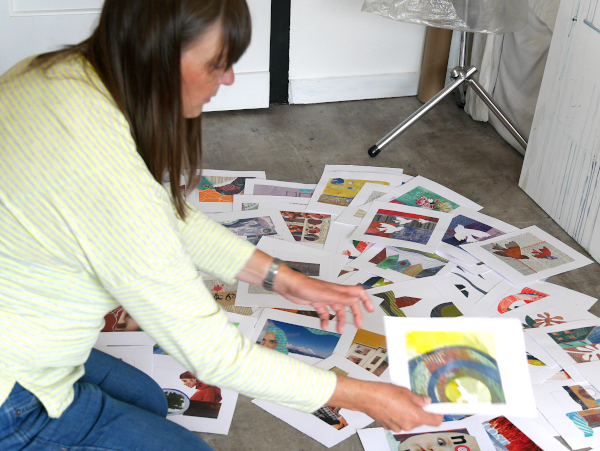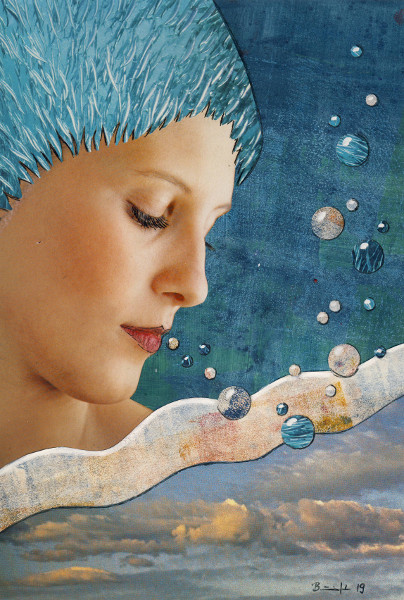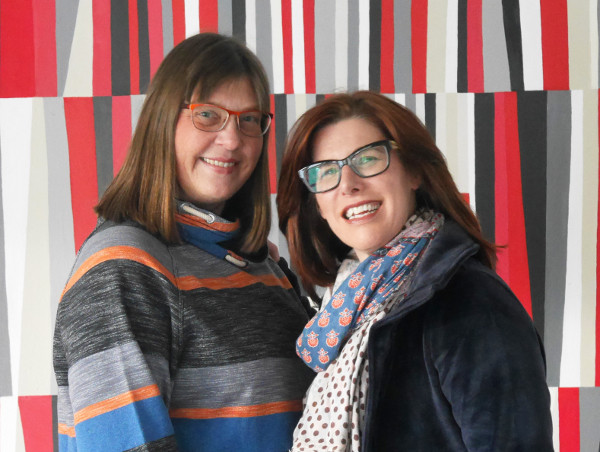So einfach, wie ich mir das gedacht habe, ist es doch nicht. Mal eben alle Collagen um mich herum auf dem Fußboden ausbreiten und dann in Ruhe betrachten.
Hätte ich vorher eine grobe Überschlagsrechnung angestellt, mir wäre klar geworden, dass ich mehr als vier Quadratmeter freie Fläche brauche, wenn ich sie in zehn Reihen mit je zehn Blätten ausbreiten wollte. Und dann säße ich noch nicht mittendrin, um auf alle zugreifen zu können.
Planänderung: Ich sortiere die Collagen vor, untereile sie in “Gegenstandslos” (26), “Organisches” (4), “Häuser” (7), “Stillleben” (6), “mit Figuren” (20), “Schrift als grafisches Element” (5), “kleine Geschichten” (24), “graphische Spielerei” (8).
Was habe ich da alles vor mir liegen?
Wenn ich mir die Stapel anschaue, wird klar, dass meine Schwerpunkte in drei Bereichen liegen:
Gegenstandslose Collagen sind knapp die größte Gruppe (aber nur, weil ich die gegenständlichen Collagen unterteilt habe). Dazu gehören sowohl viele reine Gelatinedruck-Collagen als auch Collagen mit ganz verschiedenen Papieren, bei denen ich vor allem auf Strukturen, Farben und Formen geachtet habe.
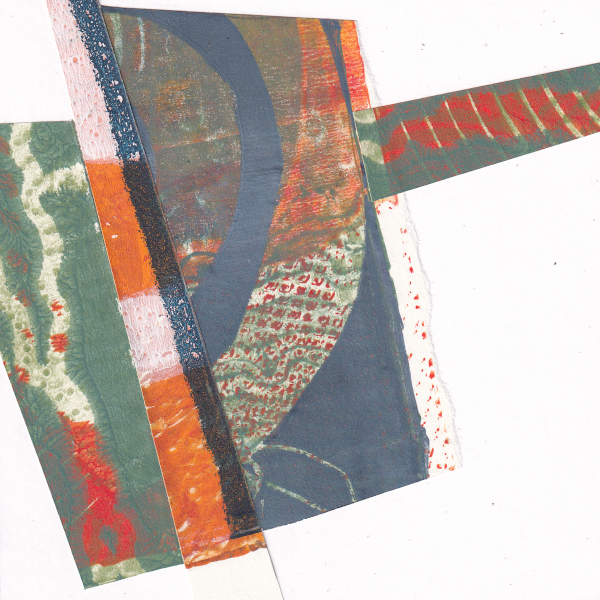
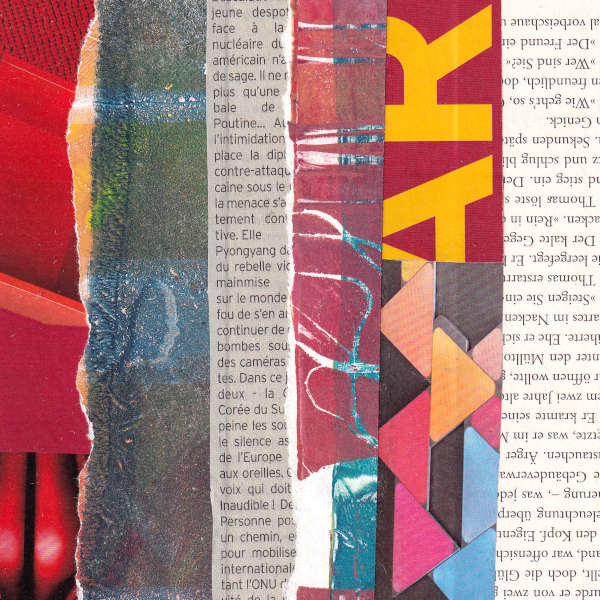
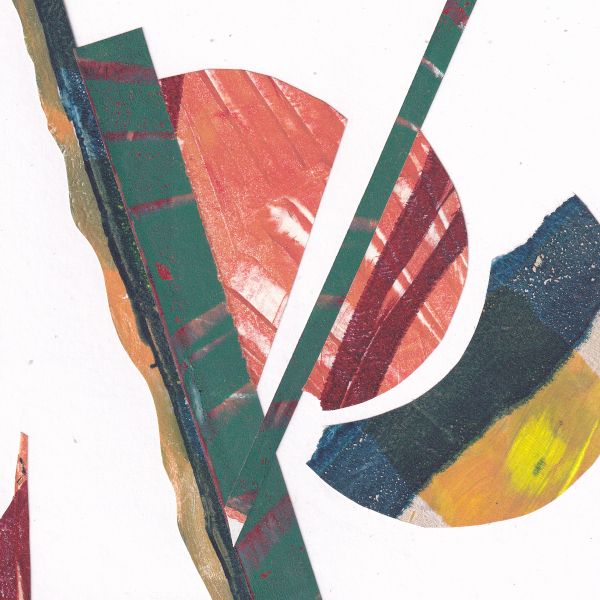
Fast genauso oft habe ich mit den Collagen “kleine Geschichten” erzählt. Was meine ich damit? Dazu gehören zum Beispiel diese Bilder:
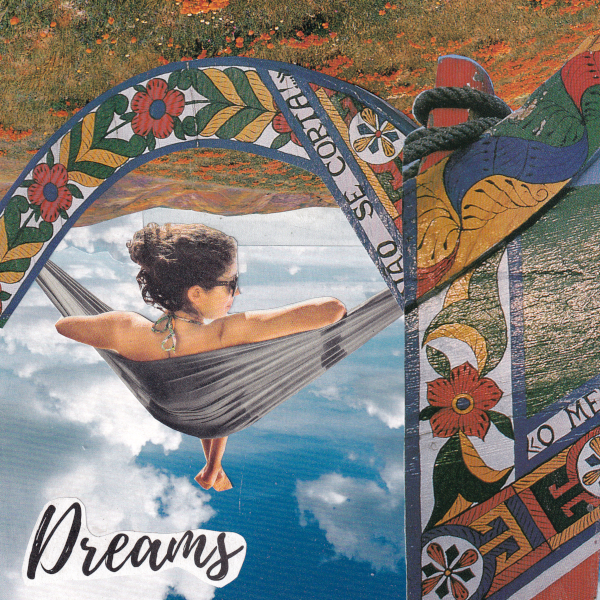
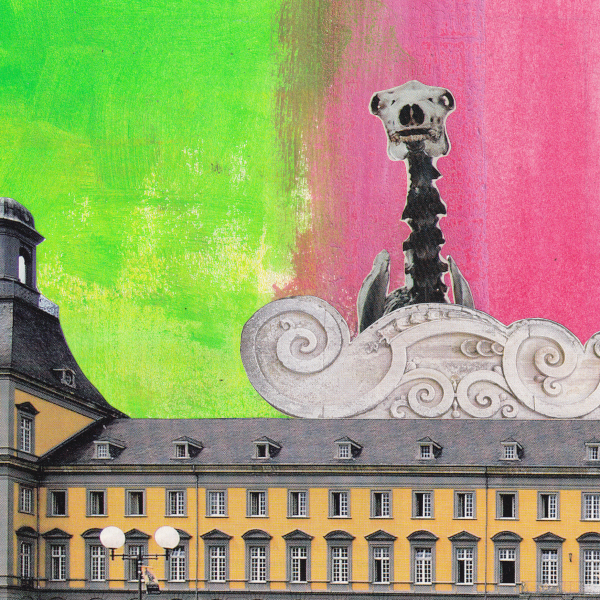

Während in meiner Malerei fast nie Figuren auftauchen, sind sie in den Collagen stark vertreten. Häufig spielt der Blick, spielen die Augen eine wichtige Rolle.
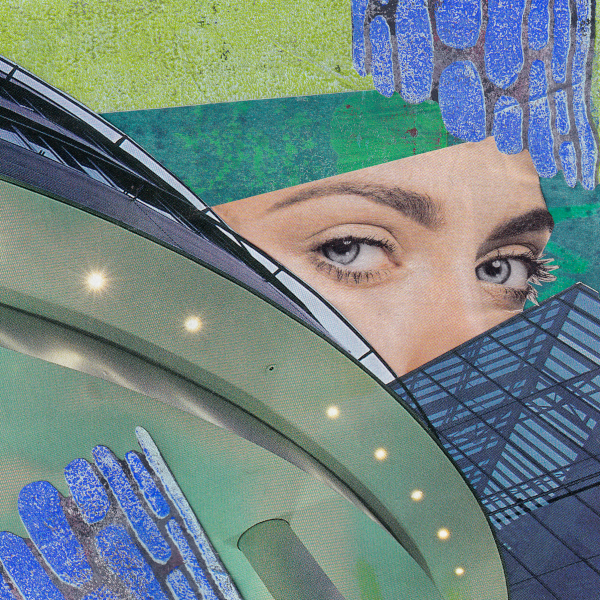
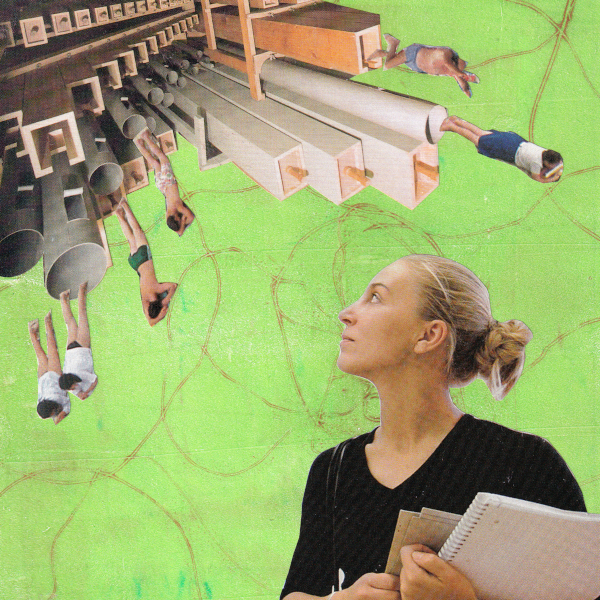
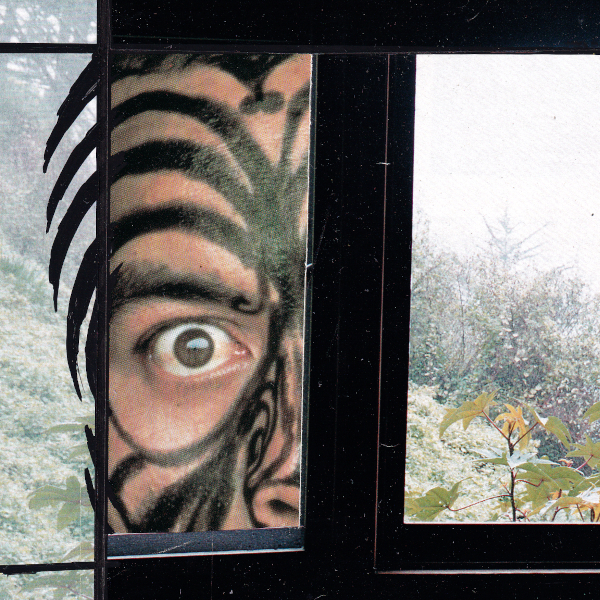
Die kleineren Bildergruppen sind meist entstanden, wenn ich durch etwas inspiriert wurde, eine Idee hatte und diese ein bisschen verfolgen wollte. Meist haben sie mich aber nicht so fasziniert, dass ich das Thema beibehalten hätte.
Eine Ausnahme sind vielleicht die “Häuser”. Ich denke, das ist ein Thema, das ich wieder aufgreifen werde, nicht nur mit Collagen in unterschiedlichen Formaten. Ich vermute, weil Häuser zu meiner Vorliebe für Landschaften passen.
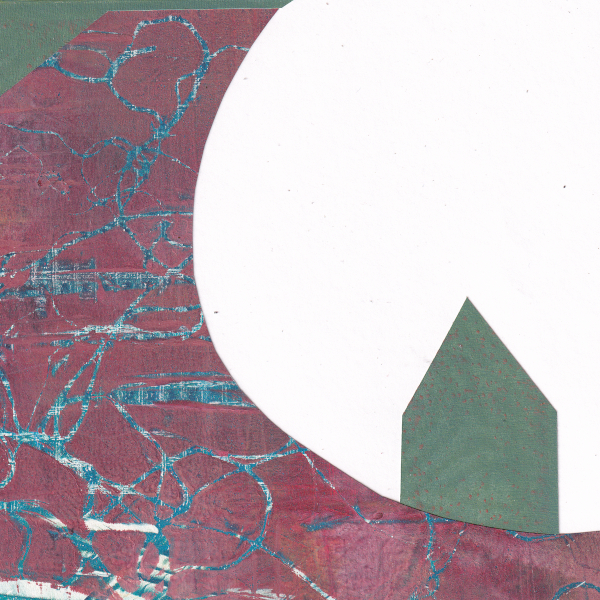
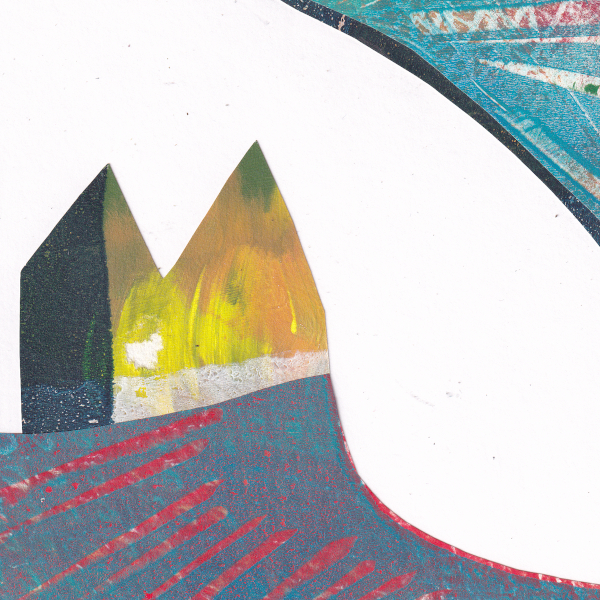
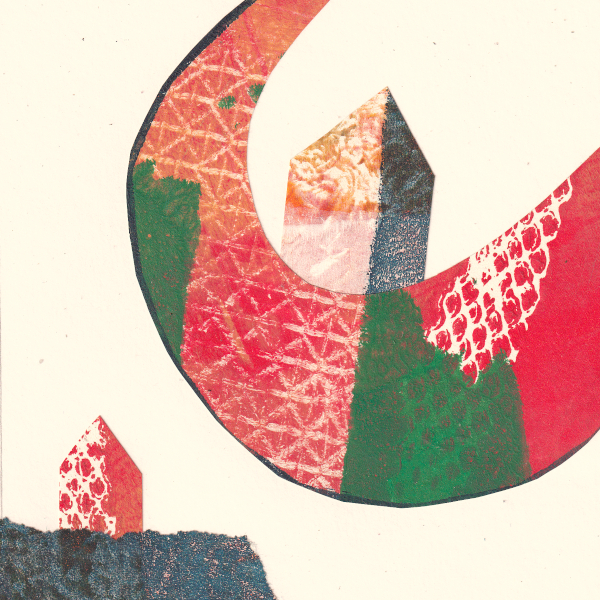
Was haben die Collagen gemeinsam, die mir am besten gefallen?
Meine Favoriten sind die Blätter, die am einfachsten strukturiert sind. Wenige Elemente mit klaren Kontrasten und deutlichem Fokus auf einem Teil des Bildes.
Wenn die Collage kleinteiliger aufgebaut ist, wenn mehr auf dem Blatt los ist, wird sie mir oft zu unübersichtlich. Vermutlich liegt das auch an dem relativ kleinen Format von 15 x 15 cm.
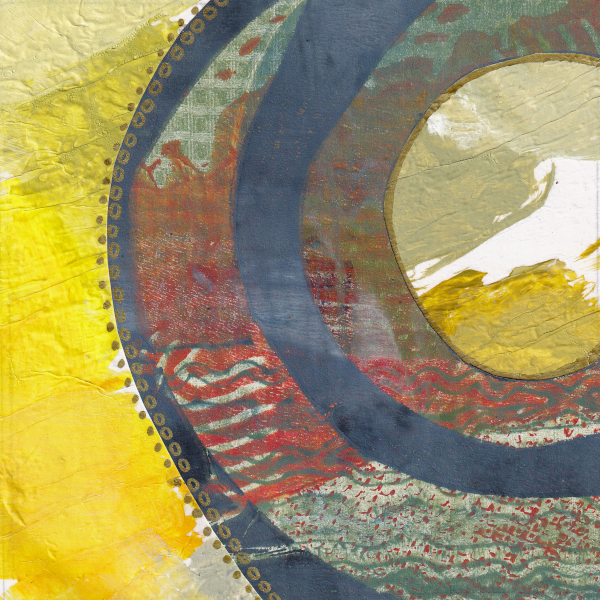
Hier jeweils ein positives (links) und ein negatives (rechts) Beispiel – für meinen Geschmack.
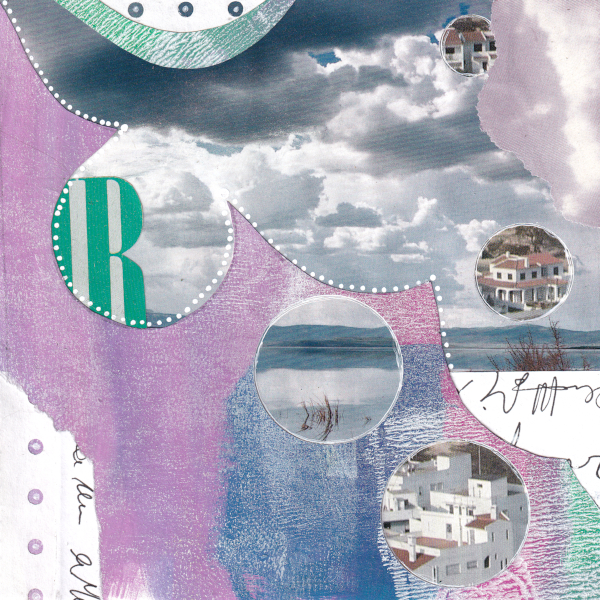
Abgesehen von “kleinen Geschichten” stelle ich eine Vorliebe für Kreise und Kreisförmiges fest. Aber auch Streifen mag ich (erinnert mich an das 100-Tage-Projekt vom letzten Jahr, wo auch viele Streifen-Bilder entstanden sind).
Und es hat mir besonders viel Spaß gemacht, mit den bunten Gelatinedrucken zu arbeiten, Elemente aus ihnen herauszuschneiden und neu zusammenzusetzen.
Ich denke, dass ich die Collagen, die mir am besten gefallen, demnächst rahmen werde. Sie dürfen dann ins galerie.mobil und werden beim nächsten “Offenen Atelier” im Herbst gezeigt.
100-day project “Collage”: A summary
It’s not as easy as I thought it would be. Just spread out all the collages around me on the floor and then look at them without a rush.
If I had done a rough calculation beforehand, I would have realized that if I were to spread it out in ten rows of ten sheets each, I would need more than four square meters of free space. And then I wouldn’t be in the middle of it to be able to access all of them.
Change of plan: I pre-sort the collages, categorizing them into “non-representational” (26), “organic” (4), “houses” (7), “still life” (6), “with figures” (20), “writing as graphic element” (5), “little stories” (24), “graphic gimmick” (8).
What do I have in front of me?
Looking at the stacks, it becomes clear that my focus is in three areas:
Non-representational collages are just about the largest group (but only because I subdivided the representational ones). This includes many pure gelatine print collages as well as collages with very different papers, in which I paid particular attention to structures, colors and shapes.



Almost as often I used the collages to tell “little stories”. What do I mean? Examples include these images:



While figures almost never appear in my paintings, they are strongly represented in the collages. The gaze often plays an important role.



The smaller groups of pictures were mostly created when I was inspired by something, had an idea and wanted to pursue it a bit. Most of the time, however, they didn’t fascinate me so much that I would have kept the topic.
The “houses” are perhaps an exception. I think that’s a theme I’ll revisit, not just with collages in different formats. I guess because houses suit my love of landscapes.



What do the collages I like the most have in common?
My favorites are the sheets that are the most simply structured. Few elements with clear contrasts and clear focus on part of the image.
If the collage is structured in smaller parts, if there is more going on on the sheet, it often becomes too confusing for me. This is probably due to the relatively small format of 15 x 15 cm.

Hier jeweils ein positives (links) und ein negatives (rechts) Beispiel – für meinen Geschmack.

Apart from “little stories” I notice a fondness for circles and circular shapes. But I also like stripes (reminds me of the 100-day project from last year, where I did a lot of stripe paintings).
And I especially enjoyed working with the colorful gelatine prints, cutting out elements from them and reassembling them.
I think that I’ll be framing the collages that I like the most in the near future. They can then go to galerie.mobil and will be shown at the next “Open Studio” in autumn.
